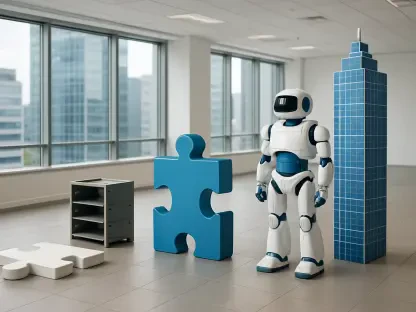What happens when the freedom of working from anywhere collides with the silent struggle of disconnection, and how is technology stepping in to bridge this gap? In 2025, millions of professionals navigate remote and hybrid setups, seeking balance between flexibility and a sense of belonging. The rise of artificial intelligence (AI) offers a surprising lifeline, transforming not just how tasks are completed, but how teams connect, engage, and thrive. This technology, once seen purely as an efficiency tool, now stands at the forefront of reshaping remote work culture, addressing isolation and burnout with innovative solutions. Dive into how AI is rewriting the rules of distributed work, promising a future where well-being and productivity coexist.
The Hidden Cost of Remote Work Freedom
Remote work has redefined professional life, granting autonomy to employees across the globe. Yet, this liberation comes with a steep, often unspoken price: the erosion of workplace camaraderie. Without impromptu coffee chats or quick desk check-ins, many feel detached from their teams, struggling to maintain a shared sense of purpose. Studies reveal that over 60% of remote workers report feelings of loneliness, a stark reminder that physical distance can breed emotional gaps. This growing concern sets the stage for a deeper look into why maintaining culture in a digital landscape is more critical than ever.
The stakes extend beyond mere connection. Organizations face rising turnover as employees, unmoored by a lack of engagement, seek environments that prioritize their mental health and sense of value. The blurring of work and personal life—where home offices double as living spaces—further fuels stress and burnout. With hybrid models projected to dominate through at least 2027, the urgency to address these challenges cannot be overstated. AI emerges as a potential game-changer, poised to tackle the very issues that threaten to unravel remote work’s promise.
Unpacking the Remote Work Dilemma
Distributed teams grapple with obstacles that traditional office settings rarely encountered. Communication breakdowns, often exacerbated by time zone differences, hinder collaboration and leave critical ideas lost in translation. The absence of casual interactions means fewer opportunities for spontaneous brainstorming, stifling creativity and weakening team bonds. Research indicates that nearly 50% of remote employees struggle with unclear expectations due to inconsistent feedback, highlighting a systemic gap in virtual workplaces.
Beyond logistics, the mental toll of constant availability weighs heavily. Employees often feel pressured to be “always on,” leading to a reported 30% increase in stress-related issues among remote workers. This relentless pace erodes work-life balance, pushing well-being to the brink. As companies strive to retain top talent in a competitive market, finding innovative ways to rebuild trust and foster inclusion becomes paramount—a challenge where technology holds untapped potential.
AI as the Architect of Remote Collaboration
AI is no longer just a tool for automating mundane tasks; it redefines the dynamics of remote work by targeting core pain points. In communication, AI-powered platforms like smart meeting assistants generate concise summaries and offer real-time language translation, ensuring clarity across global teams. Intelligent notification systems filter out non-essential alerts, allowing focus on what truly matters. These advancements enable seamless interaction, bridging gaps that distance once widened.
Engagement, too, sees a revolution through AI’s personalized touch. Algorithms analyze individual performance to suggest tailored learning paths, while sentiment analysis gauges team morale, prompting timely recognition. A study found that companies using AI-driven feedback tools saw a 75% uptick in employee satisfaction, proving that feeling valued transcends physical proximity. Such innovations cultivate a culture where remote workers are seen and supported, countering the anonymity of virtual spaces.
On the well-being front, AI acts as a silent guardian. By monitoring workload patterns, it flags signs of overwork and suggests breaks before burnout sets in. Virtual mental health chatbots provide 24/7 support, offering resources at critical moments. With data showing a 40% reduction in stress when flexible scheduling is optimized by AI, the technology proves its worth in prioritizing balance. These multifaceted roles position AI as a cornerstone of a healthier, more connected remote workforce.
Real Stories, Real Impact: AI Through the Eyes of Workers
What do those on the frontlines of remote work think about AI’s growing influence? HR leaders emphasize its strategic importance, with one executive noting that AI-driven recognition programs have “revolutionized how dispersed teams build trust.” Research backs this up, revealing a 65% improvement in engagement scores when AI tools are used to spotlight employee contributions. These insights underline a shift in perception—AI isn’t just functional; it’s foundational to culture.
Employees, too, share powerful experiences that bring data to life. A marketing specialist recounted how an AI chatbot offered coping strategies during a particularly grueling project, providing a lifeline when human support wasn’t immediately available. Such anecdotes reveal the technology’s capacity to deliver timely care, resonating on a deeply personal level. Balancing expert views with lived realities, it’s clear that AI’s impact extends beyond metrics to touch the human side of work.
Building a Better Remote Culture with AI
How can organizations harness AI to create a thriving virtual environment? Start by integrating communication tools with AI features like automated summaries and translation, ensuring no team member is left out, regardless of location or language. Platforms equipped with these capabilities streamline interactions, fostering inclusion and clarity. This foundational step sets the tone for cohesive collaboration in a digital-first world.
Next, focus on personalizing engagement through AI-driven initiatives. Custom training programs and real-time recognition systems make employees feel valued, even from thousands of miles away. Additionally, leveraging data insights to monitor workloads and prevent burnout is crucial—implement systems that alert managers to stress signals and offer mental health resources around the clock. Transparency remains key; safeguarding privacy and avoiding over-reliance on tech ensures that human connection stays at the heart of these efforts. By adopting these strategies, companies can craft a remote culture that blends innovation with empathy.
Reflecting on AI’s Legacy in Remote Work
Looking back, AI has carved a remarkable path in transforming remote work culture, proving itself as more than a fleeting trend. It tackled isolation by enhancing communication, revived engagement through personalization, and safeguarded well-being with data-driven care. The stories of employees finding support in unexpected digital corners underscored a profound shift toward a more connected virtual world.
Moving forward, organizations must commit to using AI ethically, ensuring it amplifies rather than replaces human warmth. Leaders should prioritize training to integrate these tools thoughtfully, fostering environments where technology and empathy coexist. As the landscape of work continues to evolve, the challenge lies in sustaining this balance—leveraging AI to build not just efficient teams, but deeply supportive communities for the long haul.









